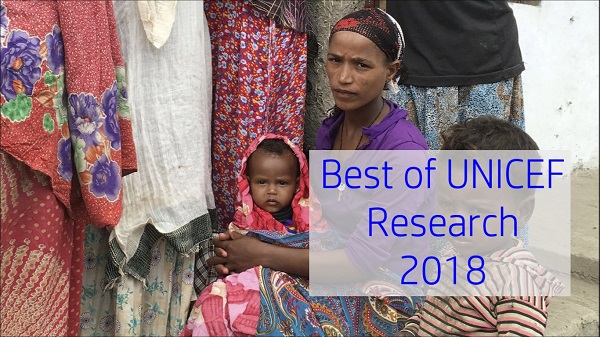
A UNICEF research concludes that the immediate impacts of the 2015-2016 El Niño in Ethiopia, which causes serious drought across large parts the country, can affect children’s capabilities and well-being for the rest of their lives.
FLORENCE, Italy (UNICEF Office of Research–Innocenti)–In 2015–2016 an El Niño episode caused significant drought across large parts of eastern, southern and central Ethiopia, leading to widespread crop failure, emergency sales of land and livestock, and food insecurity for the communities that live there. The return of the rains is not the end of the problem. Acute malnutrition, interrupted schooling and exposure to conflicts and violence – all of which are immediate impacts of drought – can affect children’s capabilities and well-being for the rest of their lives.
In the year following the El Niño episode, UNICEF Ethiopia commissioned a research project, undertaken by Oxford Policy Management and the Horn Economic and Social Policy Institute, to understand how the drought had affected children. The immediate hardships of the dry years were clear, and still fresh in children’s minds; however, the researchers had an eye on the longer view. Through qualitative research, they showed how such a disaster can trigger a decline in livelihoods that threatens the resilience of families and affects children’s long-term development. The research fills a recognized gap in evidence regarding the long-term effects of drought on child well-being.
Why was the UNICEF research done? A long-term perspective is needed
During and after the humanitarian mobilization in response to the El Niño event, donors commissioned a number of rapid assessments of the short-term impacts of the drought and the efficacy of the response. To understand the longer-term impacts of drought on children, UNICEF Ethiopia and its partners planned to explore the relationship between:
- The immediate impacts of the drought on children
- The coping strategies adopted by households in response to those impacts
- The forms of external support available to them
- How the 2015–2016 El Niño event is likely to influence the long-term well-being of children.
Drought episodes will be more frequent in future
Climate-change models predict that persistent drought episodes on the scale of those seen in 2015 and 2016 will become more frequent in Ethiopia in the future, placing millions of children at risk. If policies and programs are to help set children on positive development trajectories, it is critical that they should integrate children’s needs and aspirations into the framework of resilience building.
How was the research done? Building a framework of capabilities and resilience
The team anchored its research on two theoretical approaches that are often used to understand well-being, but are less often combined. The first, ‘capabilities’, examines how people achieve well-being – not only through material resources, such as money and food, but also through non-material conditions (such as their position in a community); possibilities (such as of employment); agency to live the life they value; abilities (such as those gained from education); and the external context within which these are all applied.1 The second approach, ‘resilience’, describes the capacity of people (or states or communities) to mediate the impacts of hazards, stresses and shocks (such as climate events) without compromising long-term prospects for development. In the researchers’ framework, children and their households drew upon their capabilities to be resilient to the drought. This, in turn, had consequences for how the children could develop their capabilities for adult life.
Read the complete story (PDF file, staring on page 32) at UNICEF Office of Research–Innocenti
